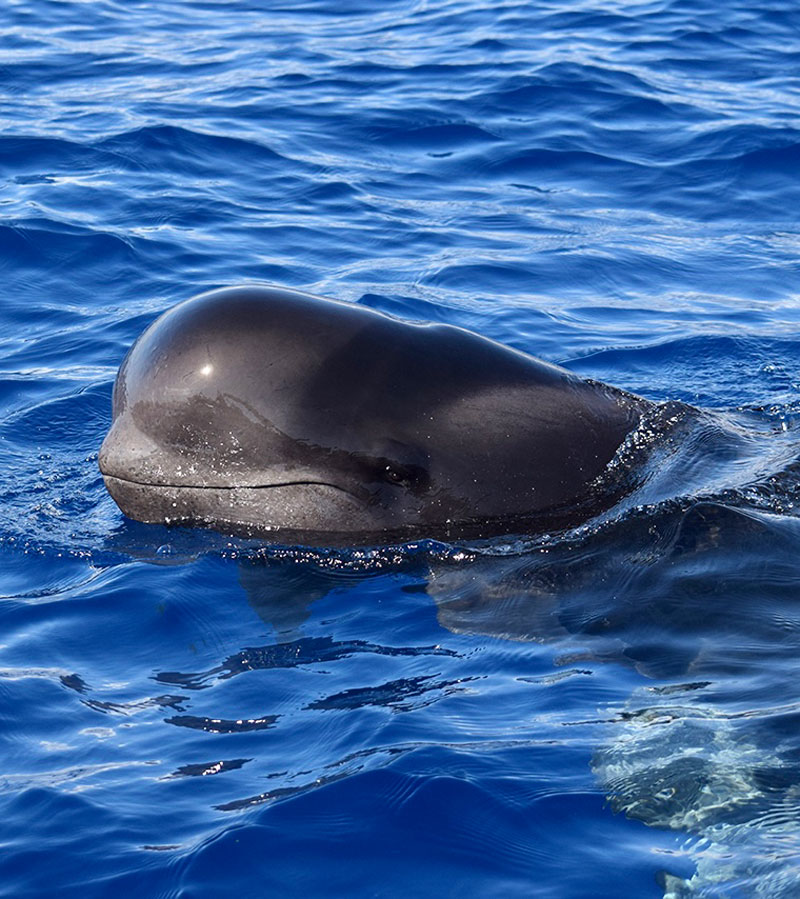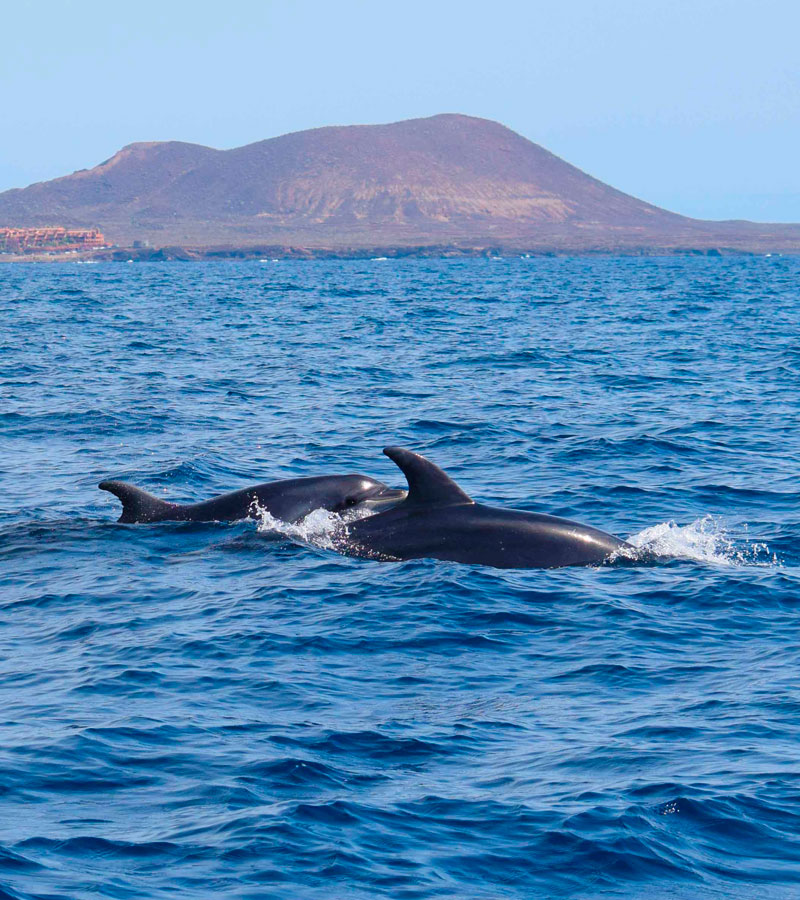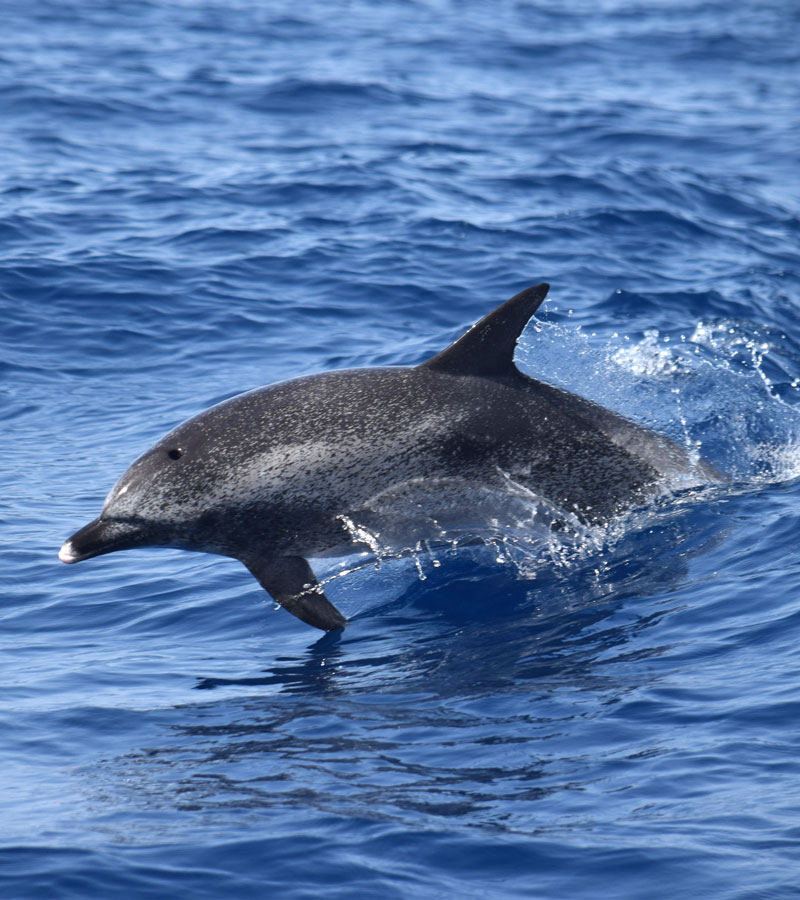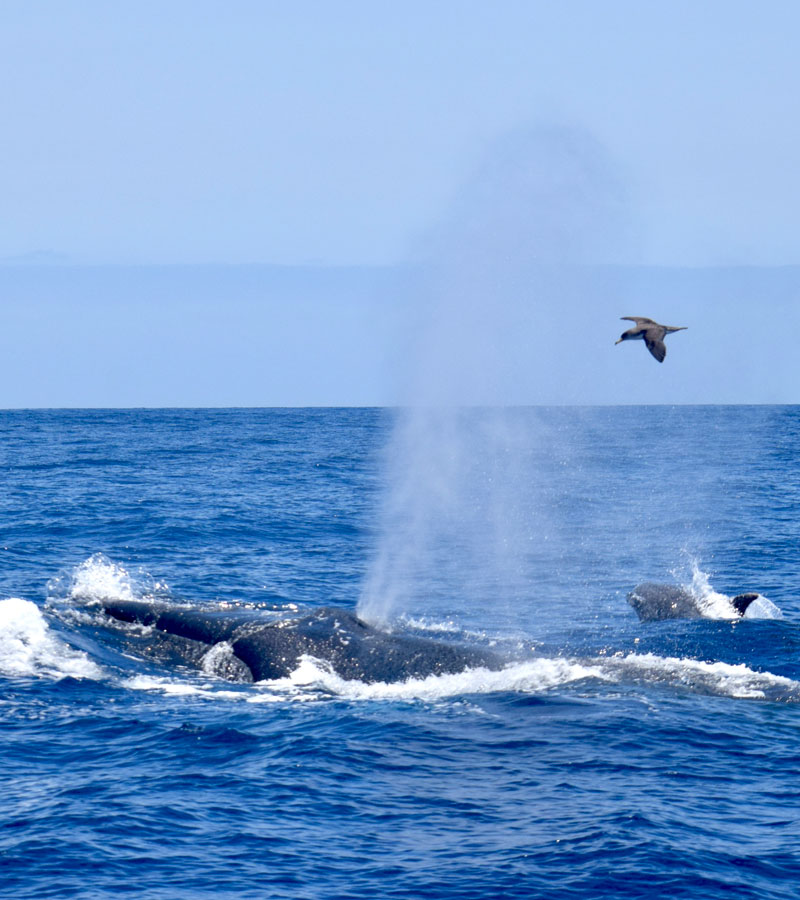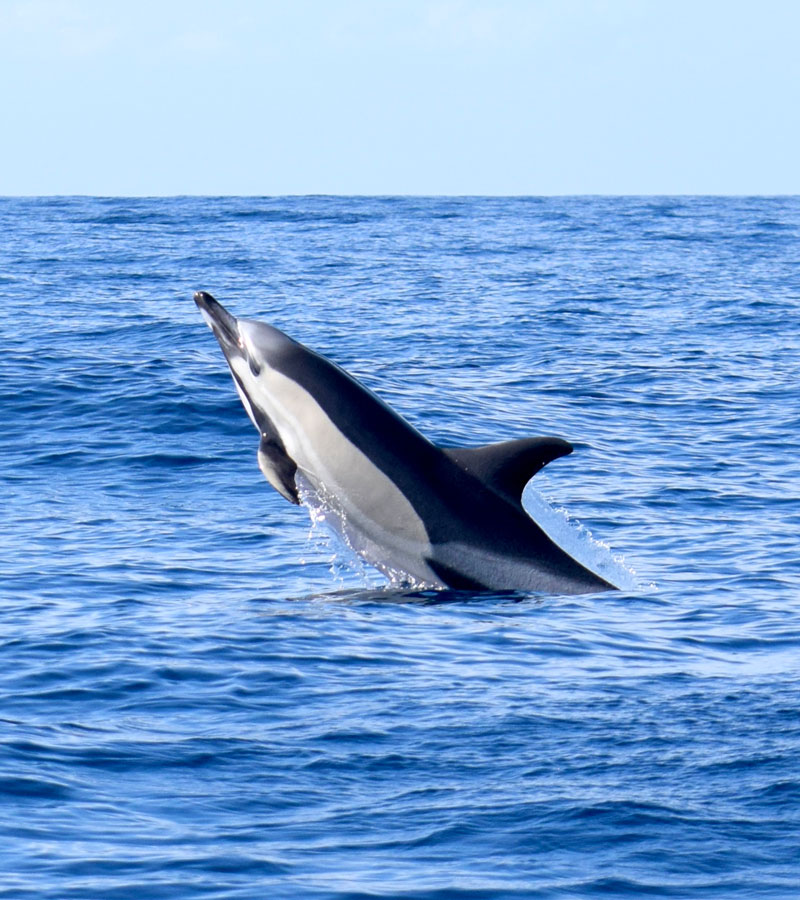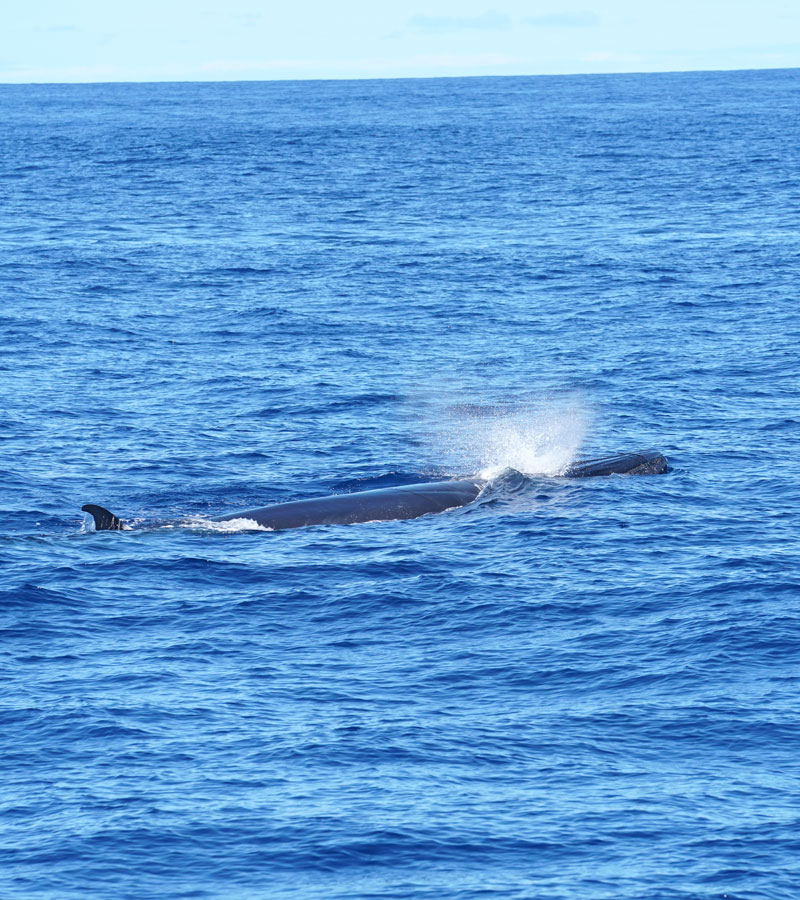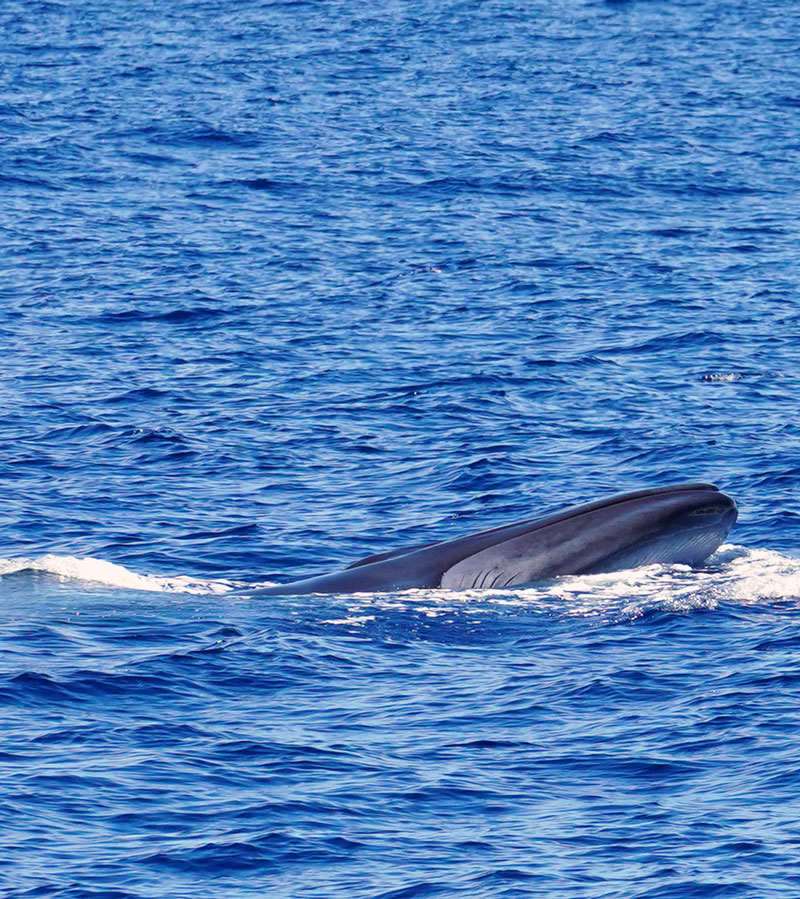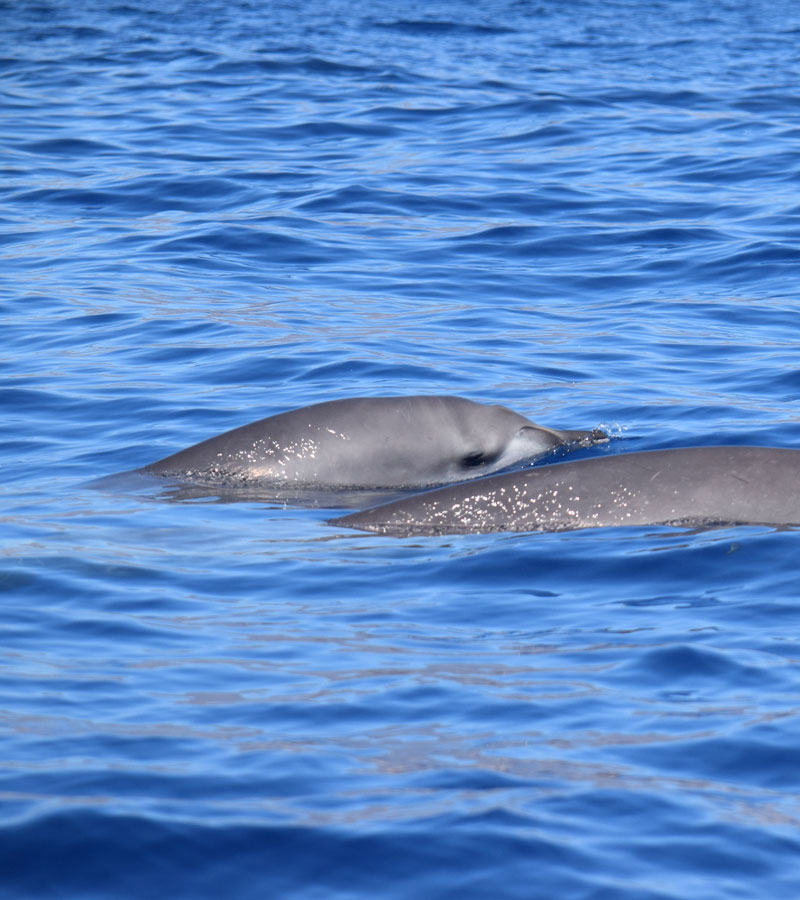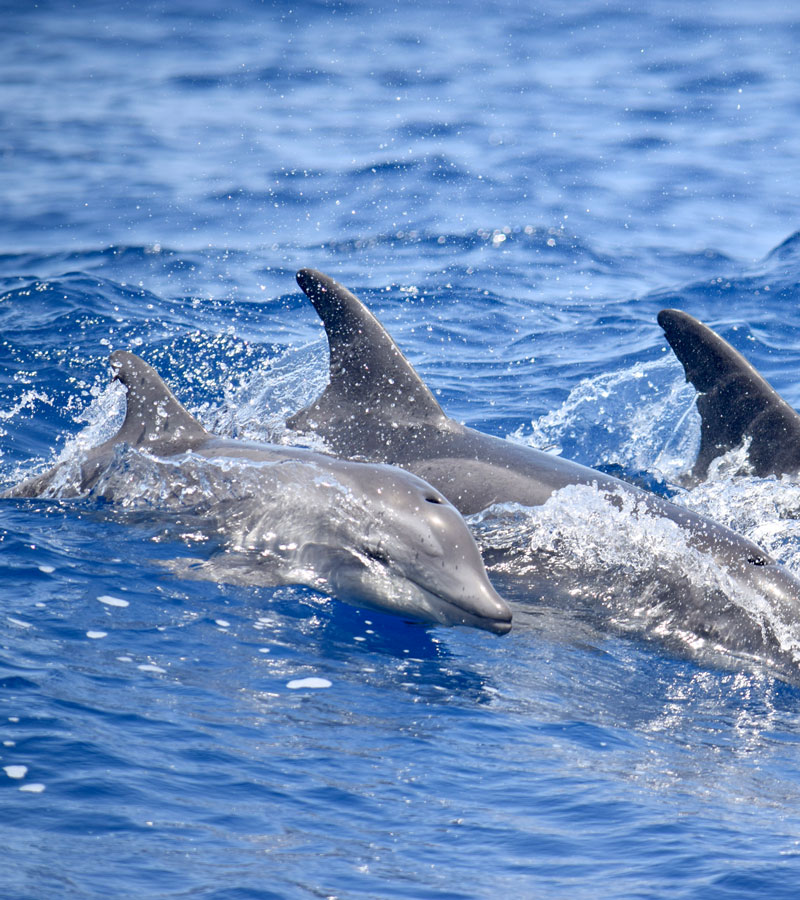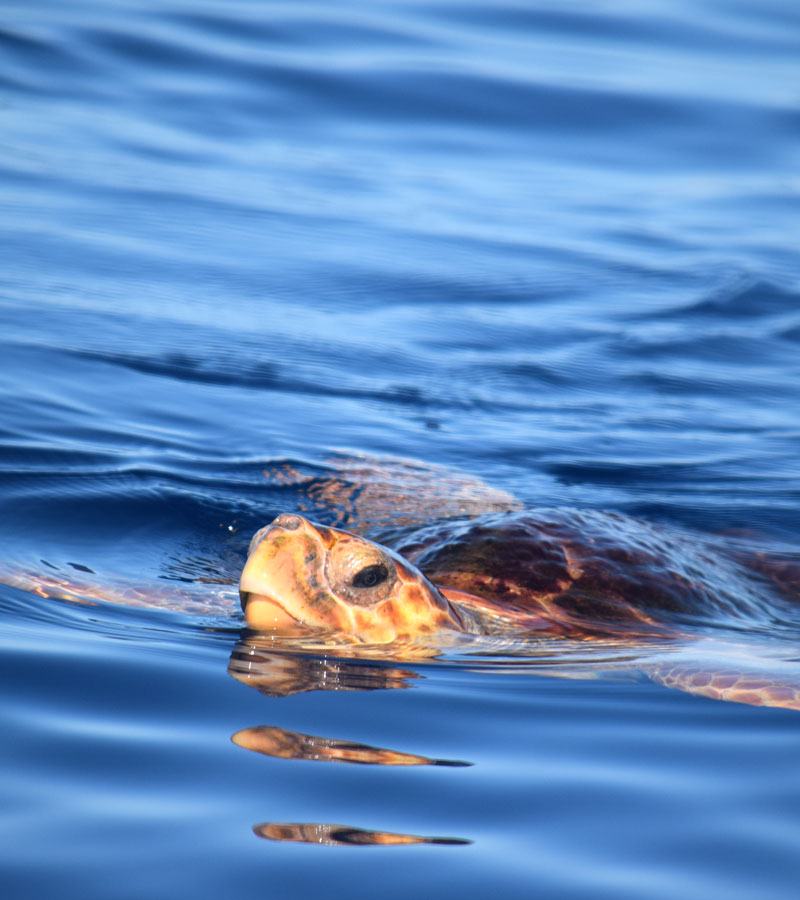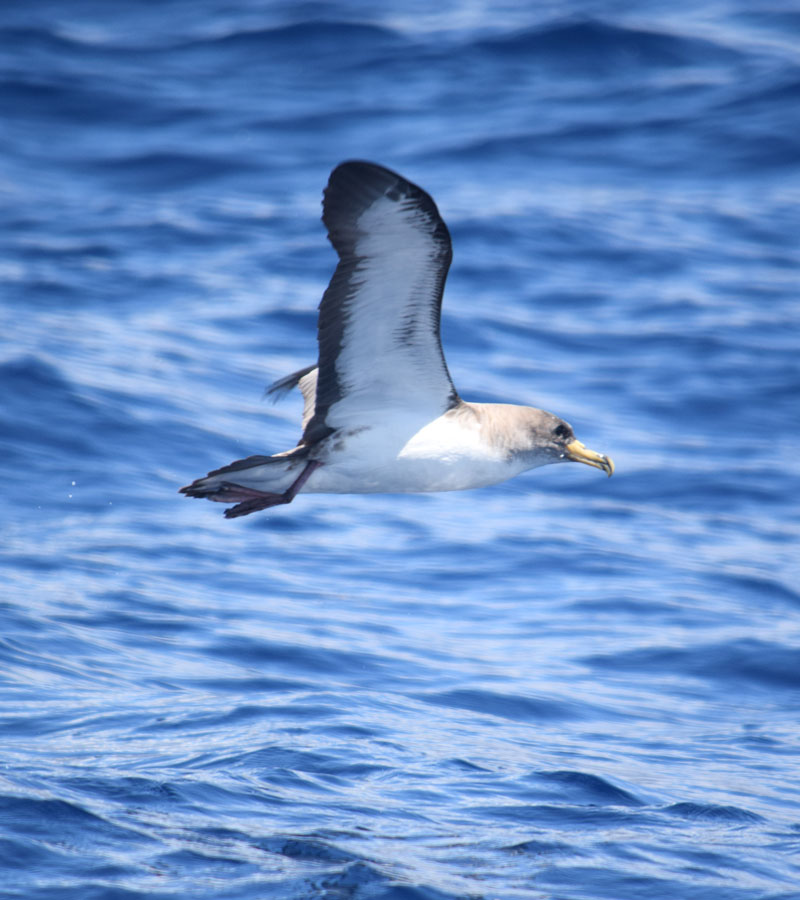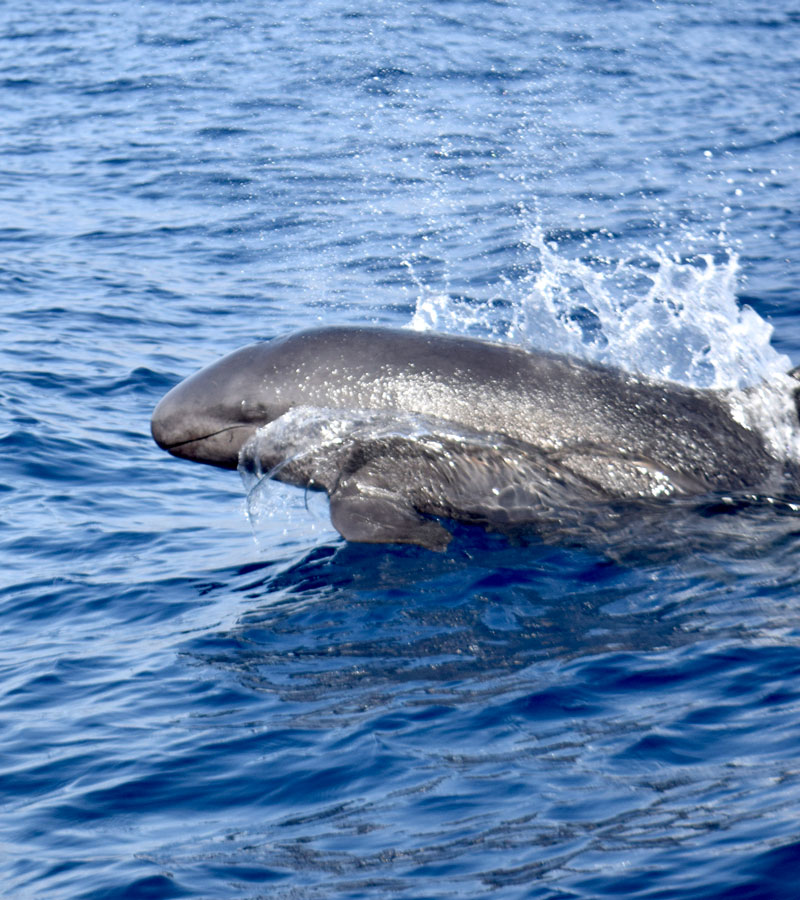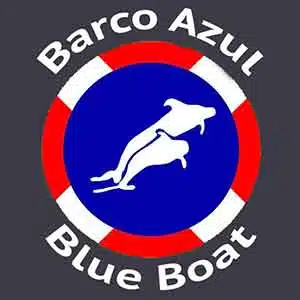Balaenoptera edeni
Bryde’s Whales in Tenerife
Meet the Bryde’s Whales!
Bryde’s Whale Sightings
The Bryde’s whale is the species of baleen whale we most commonly observe during our Tenerife whale watching tours. These whales are typically found hunting small schools of baitfish offshore, often in the company of dolphins and large groups of sea birds like the Cory shearwater and Yellow legged gull.
The ocean channel between the steep volcanic islands of Tenerife and La Gomera is over 3 kilometres deep. This creates strong currents and upwellings along the southern coast of Tenerife where schools of fish that the Bryde’s whale consumes can be found. Throughout the year as populations of different species of fish arrive, so to do the Bryde’s whales.
The Bryde’s whales we observe are often feeding near to the surface. They feed on small fish by rapidly swimming into the school, opening their mouths and expanding their throat pleats. This can make for exciting ‘National Geographic’ moments as the whales are often competing for food with marine birds and pods of dolphins.
Bryde’s Whale Info
The Bryde’s Whale is known as the tropical baleen whale as it prefers oceans of at least 16 degrees and there are both oceanic and coastal populations. This species can reach up to 16 meters in length and 40,000 kilograms. The body is slender, a grey blue color and often mottled with cookie cutter shark scars. The rostrum is angular and topped with three lateral ridges. There are 40 to 70 throat pleats that open to enlarge the mouth and throat when feeding on small schooling fish.
The Bryde’s Whale often makes sudden changes in direction when feeding, both underwater and at the surface. Often inquisitive, these whales often make close passes by the boat or swim alongside. It has irregular breathing patterns surfacing for 4 to 7 breaths before making short dives of typically less than 4 minutes. We often see exhalations underwater as the whale begins to surface, making a bubble trail. When surfacing we typically see only the rostrum and back up to the dorsal fin.
Subscribe to our
newsletter
We specialise in Tenerife whale and dolphin watching tours – we are a Tenerife Blue Flag Certified Whale Watching Organisation. From our custom built whale watching boat to our dedicated staff of Biologists Whale Watch Tenerife offers the most complete, thrilling and respectful tours to observe the whales and dolphins along Costa Adeje. We offer year round whale watching trips from the Puerto Colón Marina, Tenerife.
We specialise in Tenerife whale and dolphin watching tours – we are a Tenerife Blue Flag Certified Whale Watching Organisation. From our custom built whale watching boat to our dedicated staff of Biologists Whale Watch Tenerife offers the most complete, thrilling and respectful tours to observe the whales and dolphins along Costa Adeje. We offer year round whale watching trips from the Puerto Colón Marina, Tenerife.
- © 2024 Whale Watch Tenerife
 Booking
Booking
